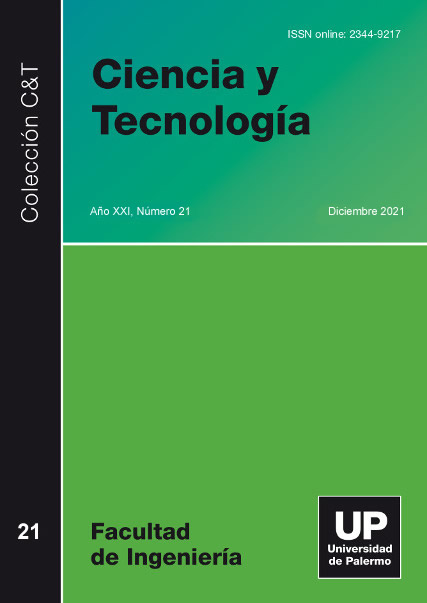Evaluación de una plataforma completa para Reconocimiento de Textos Manuscritos en Español
Resumen
La tarea del reconocimiento automatizado de textos manuscritos requiere de diversas fases y tecnologías tanto ópticas como del lenguaje. En este artículo se describe un enfoque para la realización de esta tarea de forma completa, mediante el empleo de aprendizaje automatizado a lo largo de todas las fases del proceso. Además de explicar la metodología empleada, se describe el proceso de construcción y evaluación de un modelo de reconocimiento de manuscritos para el lenguaje español. La contribución original de este artículo está dada por el entrenamiento y evaluación de modelos de Offline HTR para manuscritos en español, así como la evaluación de una plataforma para la realización de esta tarea de forma completa. Además, se detallan los trabajos que se están llevando a cabo para lograr mejoras en los modelos obtenidos, y desarrollar nuevos modelos para distintos corpus de lectura compleja.
Descargas
Citas
Bluche, T. (2015), Deep neural networks for large vocabulary handwritten text recognition, PhD thesis, Paris 11.
Castro, D.; Bezerra, B. L. D. & Valença, M. (2018), Boosting the deep multidimensional long-short-term memory network for handwritten recognition systems, in 2018 16th International Conference on Frontiers in Handwriting Recognition (ICFHR), pp. 127--132.
De Sousa Neto, A. F.; Bezerra, B. L. D.; Toselli, A. H. & Lima, E. B. (2020), HTR-Flor++: A Handwritten Text Recognition System Based on a Pipeline of Optical and Language Models, in Proceedings of the ACM Symposium on Document Engineering 2020, Association for Computing Machinery, New York, NY, USA.
Granell, E.; Romero, V. & Martinez-Hinarejos, C.-D. (2020), Study of the influence of lexicon and language restrictions on computer assisted transcription of historical manuscripts, Neurocomputing.
Graves, A.; Fernández, S.; Gomez, F. & Schmidhuber, J. (2006), Connectionist temporal classification: labelling unsegmented sequence data with recurrent neural networks, in Proceedings of the 23rd international conference on Machine learning, pp. 369--376.
Graves, A. & Schmidhuber, J. (2009), Offline handwriting recognition with multidimensional recurrent neural networks, in Advances in neural information processing systems, pp. 545--552.
Grüning, T., Leifert, G., Strauß, T., Michael, J., & Labahn, R. (2019). A two-stage method for text line detection in historical documents. International Journal on Document Analysis and Recognition (IJDAR), 22(3), 285-302.
Jeong, J.; Park, H. & Kwak, N. (2017), Enhancement of SSD by concatenating feature maps for object detection, CoRR abs/1705.09587.
Kang, L.; Riba, P.; Rusiсol, M.; Fornés, A. & Villegas, M. (2020), Pay Attention to What You Read: Non-recurrent Handwritten Text-Line Recognition, arXiv preprint arXiv:2005.13044.
Kar, R.; Saha, S.; Bera, S. K.; Kavallieratou, E.; Bhateja, V. & Sarkar, R. (2019), Novel approaches towards slope and slant correction for tri-script handwritten word images, The Imaging Science Journal 67(3), 159--170.
Liebl, B., & Burghardt, M. (2020). An Evaluation of DNN Architectures for Page Segmentation of Historical Newspapers. arXiv preprint arXiv:2004.07317.
Michael, J.; Labahn, R.; Grüning, T. & Zöllner, J. (2019), Evaluating sequence-to-sequence models for handwritten text recognition, in 2019 International Conference on Document Analysis and Recognition (ICDAR), pp. 1286--1293.
More, P. K. & Dighe, D. D. (2016), A review on document image binarization technique for degraded document images, Int. Res. J. Eng. Technol, 1132--1138.
Neto, A. F. S.; Bezerra, B. L. D. & Toselli, A. A. H. (2020), Towards the Natural Language Processing as Spelling Correction for Offline Handwritten Text Recognition Systems, Applied Sciences 10(21), 7711.
Niblack, W. (1986), An Introduction to Digital Image Processing (Englewood CliVs, NJ, Prentice-Hall.
Oliveira, S. A.; Seguin, B. & Kaplan, F. (2018), dhSegment: A generic deep-learning approach for document segmentation, in 2018 16th International Conference on Frontiers in Handwriting Recognition (ICFHR), pp. 7--12.
Otsu, N. (1979), A threshold selection method from gray-level histograms, IEEE transactions on systems, man, and cybernetics 9(1), 62--66.
Reul, C.; Christ, D.; Hartelt, A.; Balbach, N.; Wehner, M.; Springmann, U.; Wick, C.; Grundig, C.; Büttner, A. & Puppe, F. (2019), OCR4all—An open-source tool providing a (semi-) automatic OCR workflow for historical printings, Applied Sciences 9(22), 4853.
Romero, V.; Fornés, A.; Serrano, N.; Sánchez, J. A.; Toselli, A. H.; Frinken, V.; Vidal, E. & Lladуs, J. (2013), The ESPOSALLES database: An ancient marriage license corpus for off-line handwriting recognition, Pattern Recognition 46(6), 1658--1669.
Sánchez, J. A.; Mühlberger, G.; Gatos, B.; Schofield, P.; Depuydt, K.; Davis, R. M.; Vidal, E. & de Does, J. (2013), tranScriptorium: a european project on handwritten text recognition, in Proceedings of the 2013 ACM symposium on Document engineering, pp. 227--228.
Sánchez, J. A.; Romero, V.; Toselli, A. H.; Villegas, M. & Vidal, E. (2019), A set of benchmarks for handwritten text recognition on historical documents, Pattern Recognition 94, 122--134.
Sarathy, S. & Manikandan, J. (2018), Design and evaluation of a real-time character recognition system, in 2018 International Conference on Advances in Computing, Communications and Informatics (ICACCI), pp. 519--525.
Los artículos publicados en la Revista Ciencia y Tecnología son de exclusiva propiedad de sus autores. Las opiniones y el contenido de los mismos pertenecen a sus autores, declinando la Universidad de Palermo toda responsabilidad por los derechos que pudiera derivarse de la lectura y/o interpretación del contenido de los artículos publicados.
No se autoriza la reproducción, utilización ni explotación por parte de ningún tercero de los artículos publicados. Sólo se autoriza su uso para fines exclusivamente académicos y/o de investigación.









